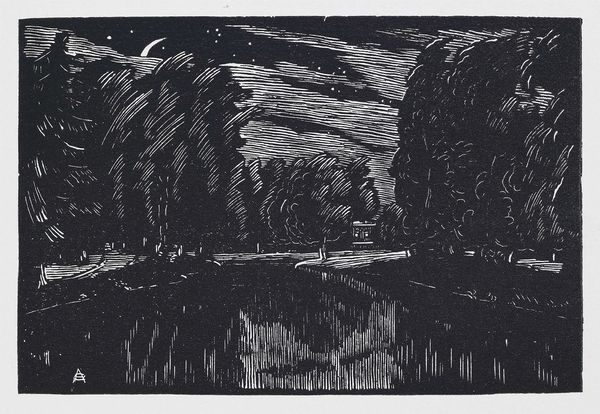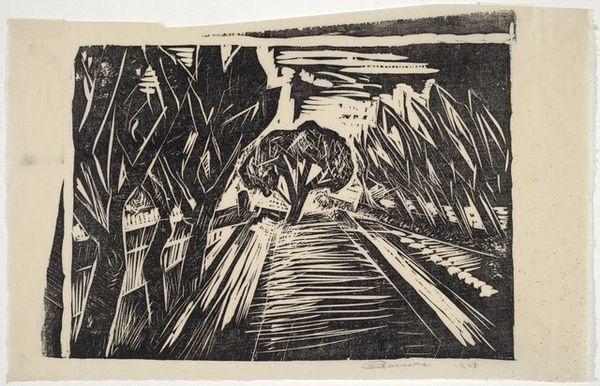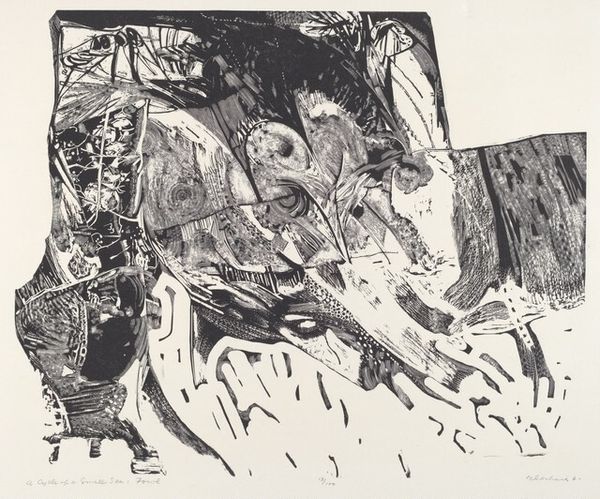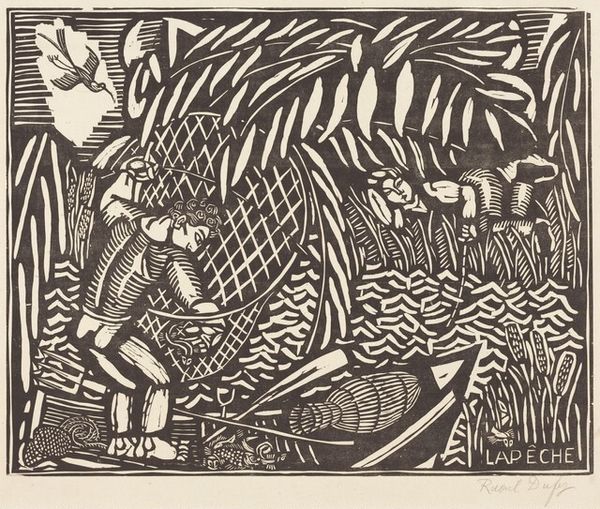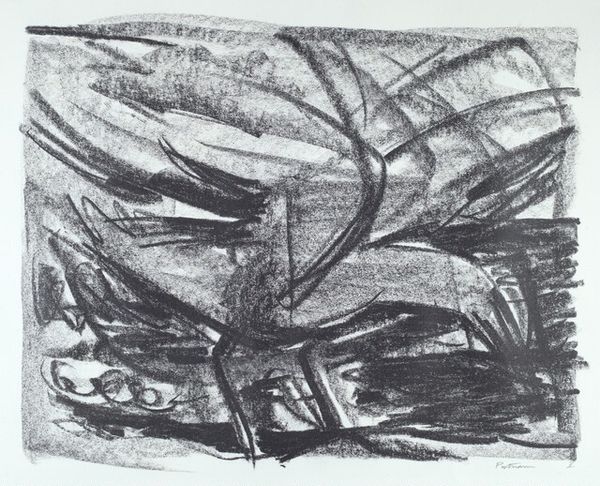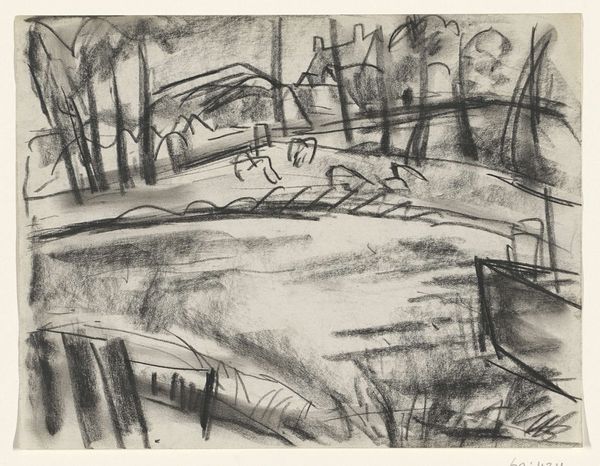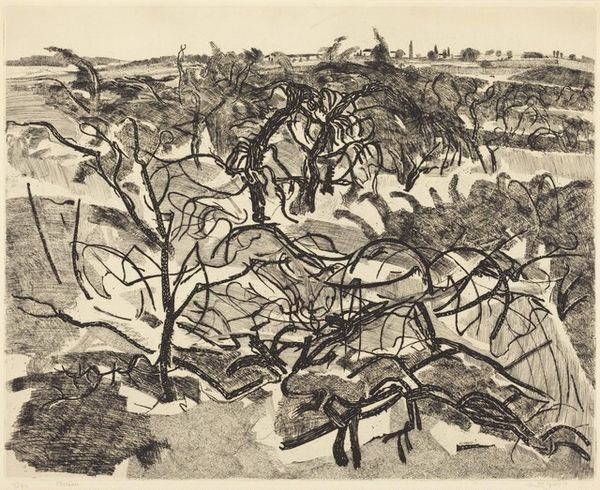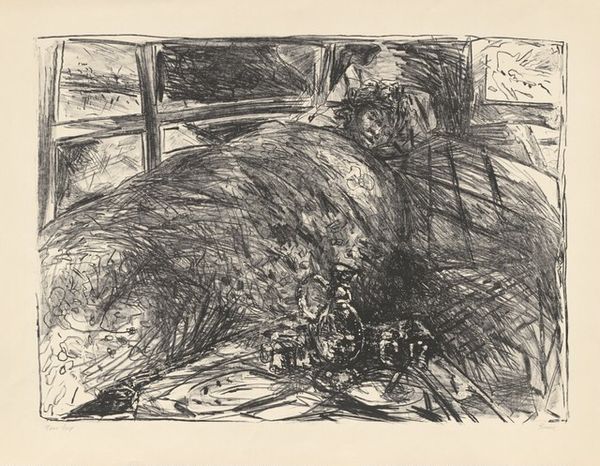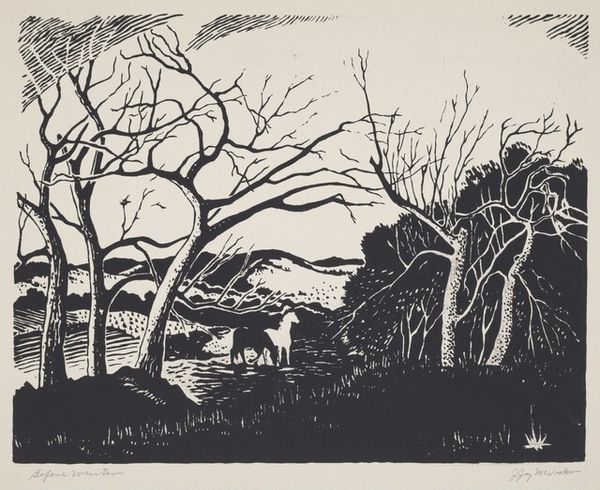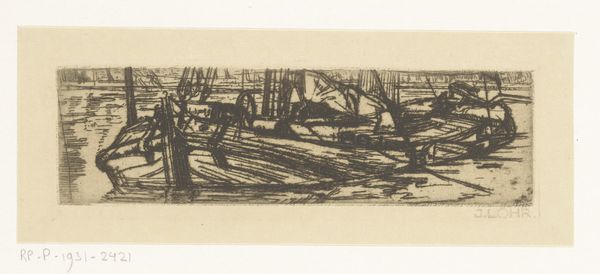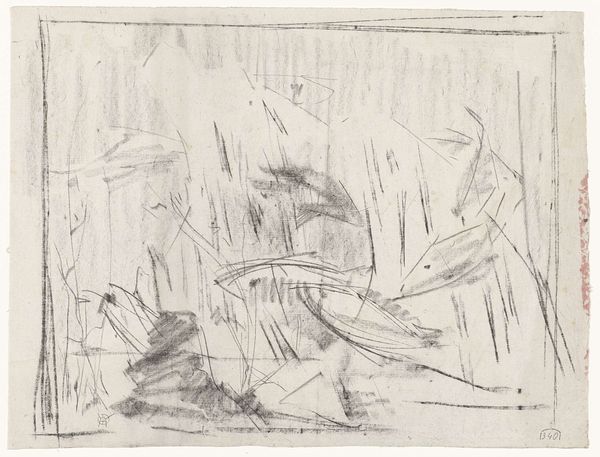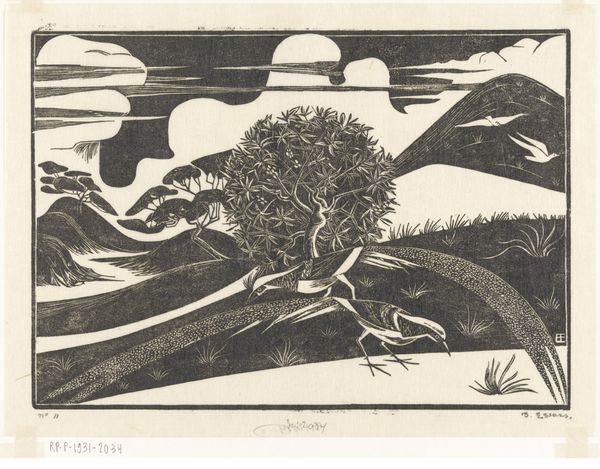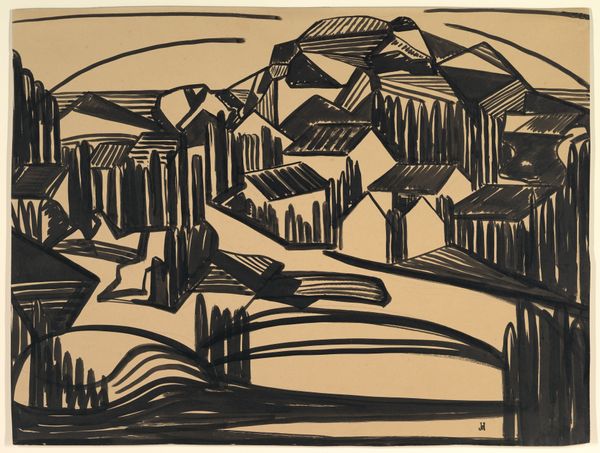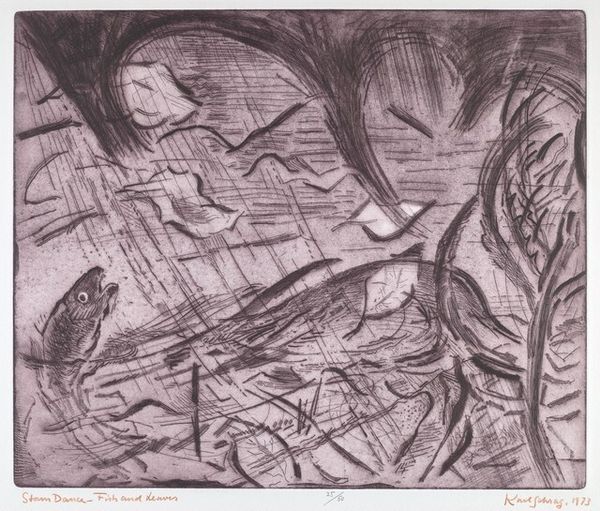
print, etching
# print
#
etching
#
landscape
#
linocut print
#
geometric
#
abstraction
#
line
Dimensions: plate: 20 x 25.4 cm (7 7/8 x 10 in.) sheet: 35.8 x 35.5 cm (14 1/8 x 14 in.)
Copyright: National Gallery of Art: CC0 1.0
Curator: Jon Jacobson created this print, "Black Ice," in 1999 using the etching technique. It’s a fantastic example of how abstract art can evoke powerful emotional landscapes. Editor: I am immediately struck by its somber, almost oppressive mood. The stark contrast and skeletal lines definitely conjure a sense of bleakness, a stillness of a frozen world. Curator: That feeling is amplified by the historical context of landscape art. Traditionally, landscapes offered idealized views, reflecting ownership and power. However, post-industrial landscapes like this, even when semi-abstract, reveal the darker side—ecological damage and perhaps, psychological anxieties linked to humanity’s impact. Editor: Visually, I'm drawn to how those dark, heavy geometric shapes loom within the composition. They appear as boulders, each marked by these repetitive linear patterns and placed so that the image feels as though it teeters unsteadily, weighed down on one side, in opposition to lighter fields that don’t seem stable, either. I read that instability as reflecting the "black ice" in the title. A perilous and potentially treacherous situation. Curator: Indeed. Jacobson uses a traditionally romantic subject, the landscape, but the abstraction subverts expectations. Rather than serene beauty, we see something much more unsettling. This print feels very connected to discussions about environmentalism and perhaps a critique of progress at any cost. It makes me think about whose stories are centered in depictions of the natural world. Editor: This abstraction lends a symbolic ambiguity, making the landscape seem less about a physical location and more about internal terrain. We might read the jagged shapes as barriers and the linear elements as fractured connections or paths, representative of our psychological states and choices we face on our journey. Curator: Exactly, the piece transcends a mere depiction of place. It raises timely questions of how historical exploitation echoes in our contemporary experience. Editor: A chillingly relevant visual experience that reverberates far beyond its making, even now. It really brings a modern feel. Curator: Yes. “Black Ice” asks viewers to consider how the world shapes our identity. The artist has succeeded in providing new ways to approach a familiar form.
Comments
No comments
Be the first to comment and join the conversation on the ultimate creative platform.
